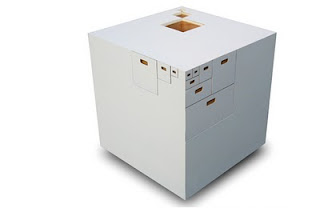

tesselation and fractals have always inspired designer for their creation. here are some examples of how people have translated fractals into fashion garments
‘Fractal Alchemy
This is a slight exhibition of collages and constructions by Carl Scrase at John Buckley Gallery, Melbourne.The biomorphic forms that go to make up the work ‘Fractal Alchemy’ (2009) fair better in this regard, the various size bull dog clips offering nonrepresentational patterns that resemble living organisms and genetic structures in shape and appearance. At their best these elemental shapes start to transcend form and function to become something else: an instinctive and intuitive connection to the inherent fold in the universe, like the embedded pattern, the DNA template in a blank piece of paper before the folding of the origami model.


Jackson Pollock's Fractals
The abstract painter Jackson Pollock (1912-1956) is widely known for his spectacular, wall-sized paintings, which typically feature a combination of swirling drips, bright splotches, and bold, rhythmic streaks.Pollock's signature technique, which he developed in the late 1940s and early 1950s, was to drip house paint--in colors such as black, white, silver, taupe, and teal--from hardened, worn-out brushes, sticks, and other applicators onto enormous sheets of canvas spread across the floor. His approach, however, was somewhat more systematic than the chaotic results might suggest.
Pollock would begin by using a series of fluid strokes to draw a collection of loopy figures. When the paint dried, he would connect the scattered shapes with darker, thicker slashes of pigment. Additional layers of dripped, poured, and hurled paint would further obscure the original forms, creating a dense web of trails across the canvas.
The researchers discovered that Pollock's patterns could be characterized as fractals--shapes that repeat themselves on different scales within the same object. In a fractal object or pattern, each smaller structure is a miniature, though not necessarily identical, version of the larger form. Fractals often occur in nature, from the meanderings of a coastline, in which the shapes of small inlets approximate the curves of an entire shoreline, to the branchings of trees and the lacy forms of snowflakes and ferns.

Here is work of an artist called Jen Stark.she makes sculptures out of paper inspired from fractals, order and chaos, and repetition of form.

Japanese art of paper folding called origami has been used intensively by various artists to explore tessellations how a .three dimension forms made out of flat surface. origami has been used to design surfaces for various spaces from installation to interior to fashion and even modular furniture.


another artists view or interpretation of order in chaos can be seen from the aerial view of several towns and cities. these images have been taking while flying or from google maps. they clearly show how what seems to be chaotically arranged is actually very systematic , following a pattern when you change your angle of vision.
Pollock would begin by using a series of fluid strokes to draw a collection of loopy figures. When the paint dried, he would connect the scattered shapes with darker, thicker slashes of pigment. Additional layers of dripped, poured, and hurled paint would further obscure the original forms, creating a dense web of trails across the canvas.
The researchers discovered that Pollock's patterns could be characterized as fractals--shapes that repeat themselves on different scales within the same object. In a fractal object or pattern, each smaller structure is a miniature, though not necessarily identical, version of the larger form. Fractals often occur in nature, from the meanderings of a coastline, in which the shapes of small inlets approximate the curves of an entire shoreline, to the branchings of trees and the lacy forms of snowflakes and ferns.

Here is work of an artist called Jen Stark.she makes sculptures out of paper inspired from fractals, order and chaos, and repetition of form.

Japanese art of paper folding called origami has been used intensively by various artists to explore tessellations how a .three dimension forms made out of flat surface. origami has been used to design surfaces for various spaces from installation to interior to fashion and even modular furniture.


another artists view or interpretation of order in chaos can be seen from the aerial view of several towns and cities. these images have been taking while flying or from google maps. they clearly show how what seems to be chaotically arranged is actually very systematic , following a pattern when you change your angle of vision.
tessellation and sacred geometry in Islamic architecture
. The Blue Mosque, Topkapı Palace, and Rüstem Pasha Camii all had its own distinct beauty and character, but it is quite evident there is one element that binds them together – their geometric structures. And because origami is comprised of geometric shapes as well, we can relate Islamic art to origami.
Additionally, it cannot be coincidental that the beautiful geometry designed on these architectural gems somehow parallel origami tessellations. Similar to origami, architecture is also one of the few art forms that combine both subjects of math and art to construct the unimaginable. So it should be no surprise that we discover origami folding patterns in Islamic architecture.

















